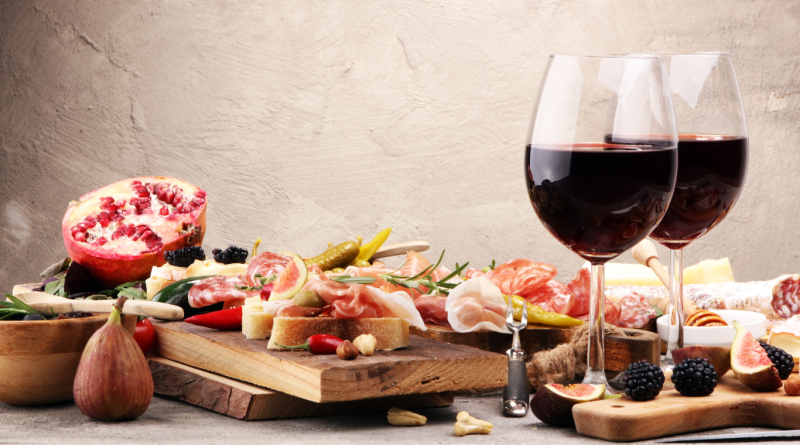
Imagine savoring a meal where every bite and sip feels connected to the earth. Pairing biodynamic wines with farm-to-table dishes elevates this experience, creating a harmony between what’s on your plate and in your glass. These wines, crafted with a deep respect for nature, complement the fresh, seasonal ingredients that define farm-to-table dining.
By embracing seasonal pairings, you celebrate the flavors of the moment while supporting sustainable practices. Whether it’s a crisp white wine alongside a summer salad or a robust red with a hearty winter stew, the right combination enhances both the dish and the wine. It’s not just a meal—it’s a celebration of nature’s rhythm.
What Are Biodynamic Wines?
Biodynamic wines come from vineyards managed with biodynamic farming principles, focusing on sustainability and ecological balance. These principles integrate organic farming practices with lunar cycles and planetary influences to enhance soil and vine health.
Farmers avoid synthetic chemicals, using natural composts and herbal sprays to cultivate the vines. They enrich the soil through cover crops, compost, and careful attention to biodiversity, fostering a self-sustaining ecosystem.
Wineries follow strict guidelines, with certification often provided by organizations like Demeter. The winemaking process excludes additives like commercial yeast, ensuring the wine remains naturally expressive of its terroir. This approach results in wines with distinctive flavors, reflecting the land and season.
Understanding The Farm-To-Table Movement
The farm-to-table movement emphasizes using ingredients sourced directly from local farms, reducing the distance between producers and consumers. It supports sustainable agriculture, ensuring farmers use eco-friendly practices while delivering fresh, high-quality produce.
Seasonal eating is central to this approach, focusing on ingredients harvested at their peak ripeness. Spring menus may feature asparagus and peas, summer highlights include heirloom tomatoes and zucchini, fall emphasizes squash and root vegetables, and winter celebrates hearty greens like kale and cabbage.
Transparency defines farm-to-table dining, connecting you directly to the origins of your food. Restaurants often collaborate with nearby farms, listing details of their sourcing on menus to promote traceability and trust.
By embracing this movement, you engage with a culinary philosophy that prioritizes flavor, sustainability, and the local community.
Seasonal Pairing Basics
Seasonal pairing connects the unique characteristics of biodynamic wines with the flavor profiles of fresh, locally-sourced farm-to-table dishes. By aligning with nature's cycles, you enhance both the dining experience and the wine's expression of its terroir.
Spring: Freshness And Bright Flavors
Spring pairings highlight vibrant, fresh ingredients like asparagus, peas, and radishes. White biodynamic wines with zesty acidity, such as Sauvignon Blanc, complements light dishes like spring vegetable risottos or herb salads. Look for wines with floral and citrus notes to mirror the season's liveliness.
Summer: Light Dishes And Crisp Wines
Summer dishes feature ripe tomatoes, zucchini, and berries. Pair these with biodynamic Rosé, which balance crisp acidity with notes of stone fruits. For grilled seafood or citrus-dressed salads, select wines with refreshing minerality to complement the season's heat.
Fall: Earthy Tones And Rich Pairings
Fall emphasizes earthy ingredients like mushrooms, squash, and root vegetables. Match these with biodynamic Pinot Noir or Chenin Blanc, which enhance caramelized and roasted flavors. Consider pairing wild mushroom risotto or spiced pumpkin dishes with earthy wines that echo the season's warmth.
Winter: Bold Flavors And Robust Wines
Winter dishes feature hearty ingredients like braised meats, root vegetables, and dark leafy greens. Full-bodied biodynamic reds like Syrah or Malbec provide depth to stews, roasts, or spice-forward dishes. Wines with structured tannins and spice notes align perfectly with winter's robust flavors.
Tips For Creating Perfect Seasonal Pairings
-
Match Intensities
Align the flavor intensity of the dish with the wine. Pair delicate greens and spring peas with light-bodied whites like Riesling or Sauvignon Blanc. For richer fare like winter roasts, choose full-bodied reds such as Syrah.
-
Highlight Regional Synergy
Combine wines and dishes from the same region. A farm-to-table meal centered on Provencal ingredients pairs seamlessly with biodynamic Rosé from southern France. Regional harmonies enhance flavors and preserve authenticity in the pairing.
-
Consider Preparation Styles
Base the wine choice on how ingredients are cooked. Grilled summer vegetables complement the smoky notes in biodynamic Chardonnay, while roasted fall squash pairs beautifully with the nutty undertones of Viognier.
-
Balance Acidity
Match acidic dishes with wines of equal acidity. Citrus-dressed salads pair perfectly with crisp biodynamic whites. Acidic wines also cut through rich meals, like pairing vibrant Chenin Blanc with creamy risottos in fall.
-
Focus on Seasonal Ingredients
Let the produce guide your pairings. Spring asparagus complements aromatic Gewürztraminer, while a winter beet salad finds balance with earthy Pinot Noir. This approach maintains the season’s essence in every bite and sip.
-
Use Wine as Contrast
Balance flavors by contrasting instead of matching. Pair mildly sweet biodynamic Riesling with spicy farm-to-table curries or tangy Vermentino with salty seafood for flavor variety without dissonance.
-
Enhance Earthiness
Match earthy flavors with equally nuanced biodynamic wines. Fall dishes featuring mushrooms pair beautifully with Syrah or Pinot Noir to draw out complementary umami tones. In contrast, spring’s light herbs align with floral whites like Albariño.
The Importance Of Sustainability In Wine And Food Pairings
Sustainability strengthens the relationship between wine and food by prioritizing environmental responsibility and ecological balance. Biodynamic wines and farm-to-table dishes align with sustainable principles, reducing resource use and waste in production. These practices support biodiversity by fostering healthier ecosystems.
Choosing biodynamic wines ensures grapes are grown without synthetic fertilizers or pesticides. Farm-to-table dining incorporates crops cultivated with minimal environmental impact, promoting local agriculture. Together, these approaches reduce dependency on industrial farming, which often depletes soil nutrients and harms surrounding ecosystems.
Sourcing local ingredients reduces the carbon footprint of transporting goods over long distances. Pairing these with biodynamic wines highlights the interconnectedness of sustainable practices. When you select seasonal dishes and wines that reflect their terroir, you help create a positive cycle of ecological preservation.
This focus on sustainability goes beyond environmental benefits. By supporting local farmers, biodynamic winemakers, and sustainable restaurateurs, you enhance the economic resilience of small communities. Transparent supply chains also encourage consumer trust, reinforcing the value of sustainable choice.
At Organic Wines, sustainability is at the heart of everything we do. We carefully source wines that align with eco-conscious values—supporting small producers, local agriculture, and clean winemaking practices. Our collections include vibrant Natural Wines, No or Low Alcohol Wines, skin-contact Orange & Amber Wines, and refreshing Pét-Nat Wines, all crafted with minimal intervention and maximum care. When you choose our wines, you're not just enjoying quality—you’re contributing to a more sustainable future.
Key Takeaways
-
Biodynamic wines and farm-to-table dishes create a harmonious connection with nature, enhancing the flavors of seasonal, locally-sourced ingredients.
-
Biodynamic wines are produced through sustainable farming practices, emphasizing ecological balance, biodiversity, and natural expressions of terroir.
-
The farm-to-table movement promotes sustainability and supports local farmers, featuring fresh, seasonal ingredients at their peak ripeness.
-
Seasonal pairings enhance the dining experience, aligning biodynamic wines' characteristics with the flavors of each season—like crisp whites for spring and robust reds for winter.
-
Sustainability is key to biodynamic wine and farm-to-table pairings, reducing environmental impact, supporting local economies, and preserving ecosystems.
-
Thoughtful pairings consider balance, preparation, and regional synergy, ensuring each dish and wine complement each other perfectly for a flavorful and eco-conscious meal.
Conclusion
Pairing biodynamic wines with farm-to-table dishes offers more than just a meal—it’s an opportunity to connect with nature, celebrate sustainability, and savor the best of each season. By choosing wines and ingredients that honor the land, you support ethical practices while enjoying unmatched flavors.
Every thoughtful pairing reflects a commitment to balance, harmony, and the rhythms of the earth. Whether you’re planning a seasonal gathering or simply exploring new culinary experiences, embracing these principles transforms dining into a meaningful and delicious journey.
Explore our biodynamic wines and bring home bottles that taste as good as the values they represent.
Frequently Asked Questions
What are biodynamic wines?
Biodynamic wines are made using biodynamic farming methods that focus on sustainability and ecological balance. These vineyards avoid synthetic chemicals, use natural composts, and incorporate lunar cycles and planetary influences to improve vine health. The result is wine that authentically reflects its terroir.
What is the farm-to-table movement?
The farm-to-table movement emphasizes sourcing ingredients directly from local farms, reducing the gap between producers and consumers. It promotes sustainability, seasonal eating, and transparency, while supporting local agriculture and enhancing freshness and flavor in meals.
Why are biodynamic wines ideal for seasonal pairings?
Biodynamic wines naturally express their terroir and seasonality, making them perfect for pairing with fresh, locally-sourced dishes. Their nuanced flavors complement the characteristics of seasonal ingredients, enhancing the dining experience.
How do biodynamic wines align with sustainability?
Biodynamic wines avoid synthetic fertilizers and pesticides, promoting soil health and biodiversity. These sustainable practices reduce environmental impact and benefit local ecosystems, aligning with eco-friendly values.
What are the best wine pairings for each season?
For spring, pair vibrant white wines like Sauvignon Blanc with fresh vegetables. In summer, crisp Rosé complements light dishes. Fall calls for earthy Pinot Noir with hearty flavors, while winter suits robust reds like Syrah for bold meals.
How can I ensure a perfect wine pairing with farm-to-table dishes?
Match the dish's intensity with the wine, consider regional pairings, and balance acidity. Use seasonal ingredients and select wines with earthy nuances to draw out complementary tones for enhanced flavors.
What are the environmental benefits of choosing local ingredients?
Sourcing local ingredients reduces transportation emissions, supports sustainable agriculture, and strengthens local economies. This practice fosters trust, lowers the carbon footprint, and promotes environmentally friendly consumption.
Why is sustainability important in food and wine pairings?
Sustainability ensures that both wine production and food sourcing minimize environmental harm. By choosing biodynamic wines and local ingredients, you actively support ecological balance and community resilience.
What should I look for when choosing biodynamic wines?
Look for certifications like Demeter, which ensure biodynamic farming practices. Avoid wines with artificial additives, and prioritize those that emphasize natural terroir expression and ecological responsibility.
How does the seasonal approach enhance dining experiences?
Seasonal pairings celebrate the moment’s flavors, ensuring dishes and wines complement each other perfectly. This approach prioritizes freshness, enriches flavors, and contributes to a deeper connection to nature.
